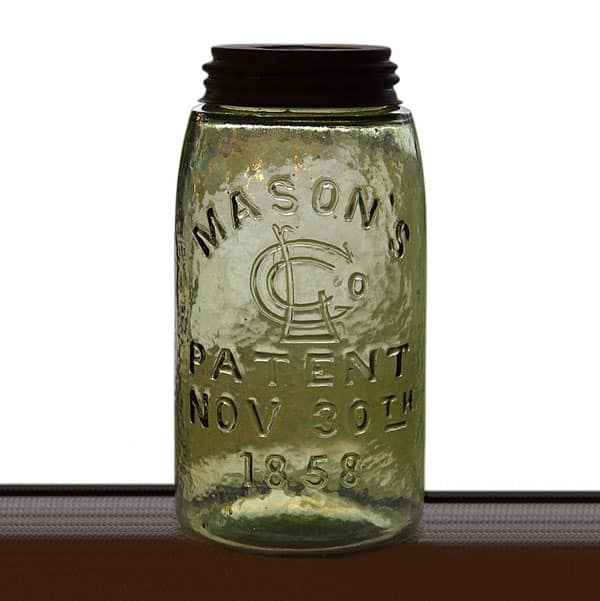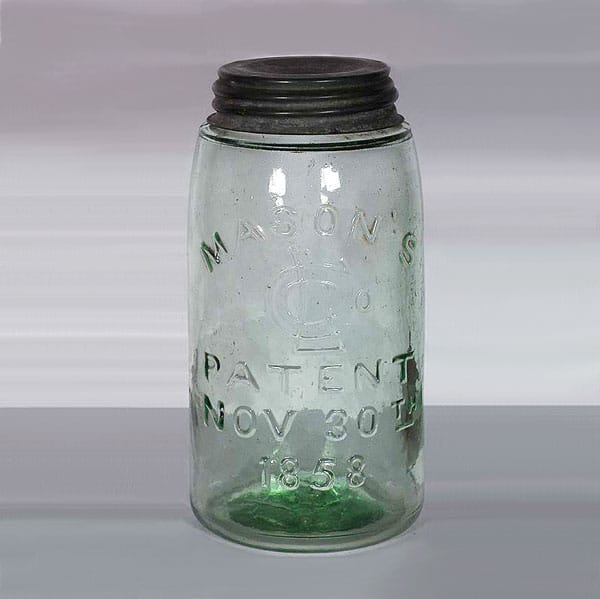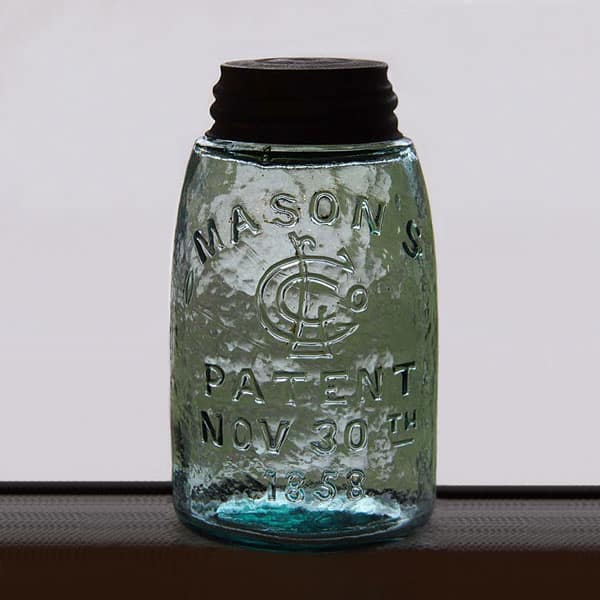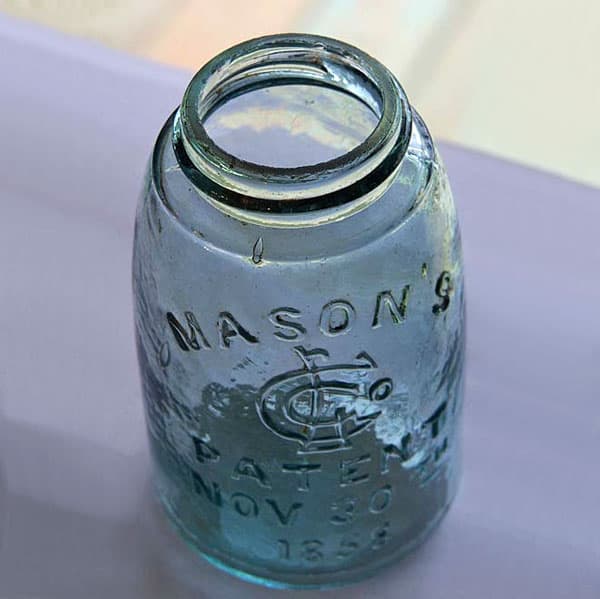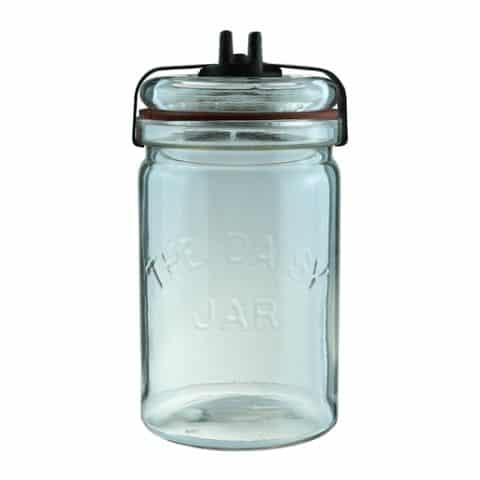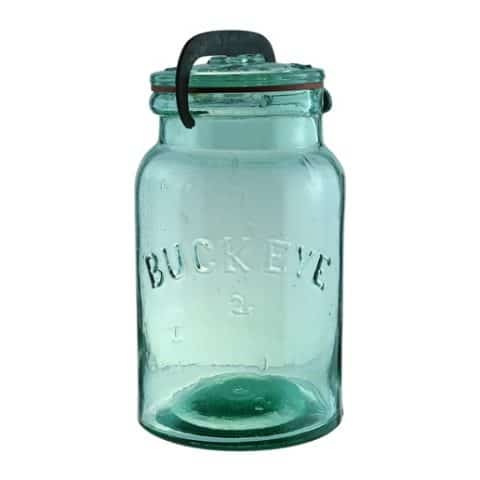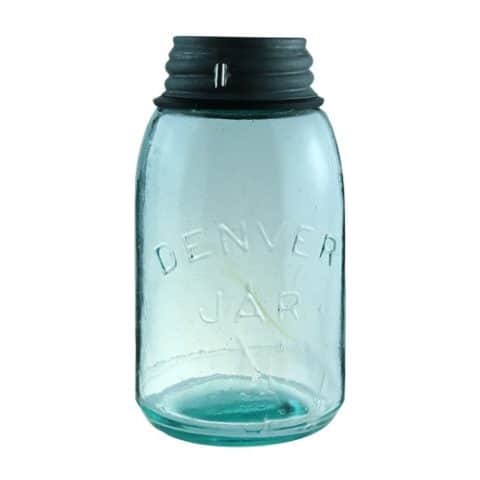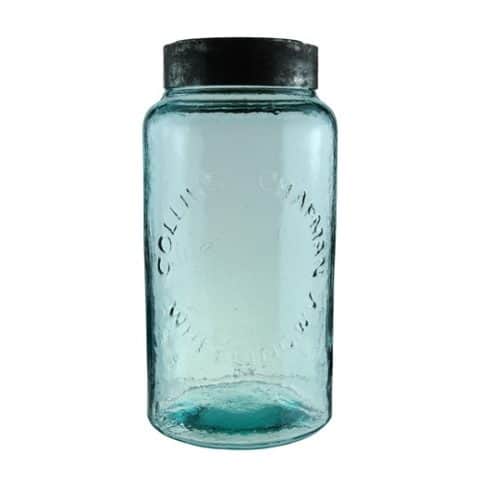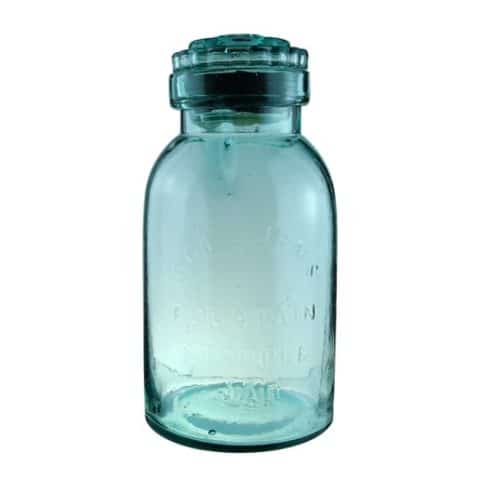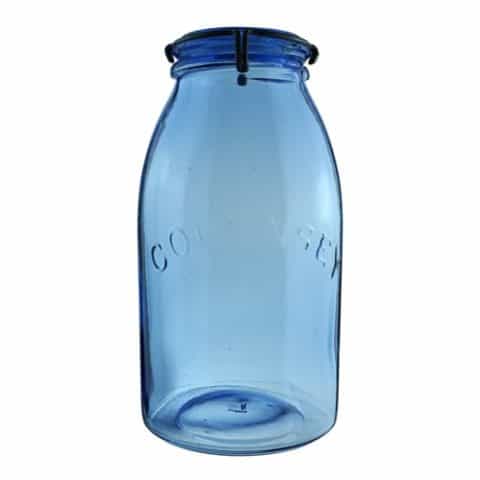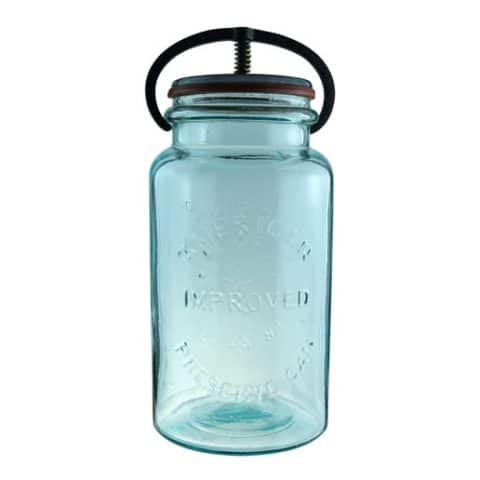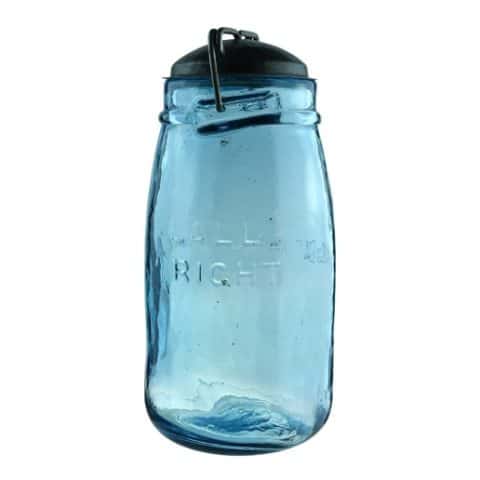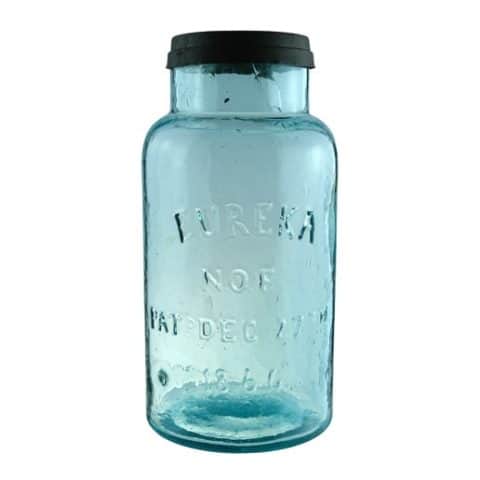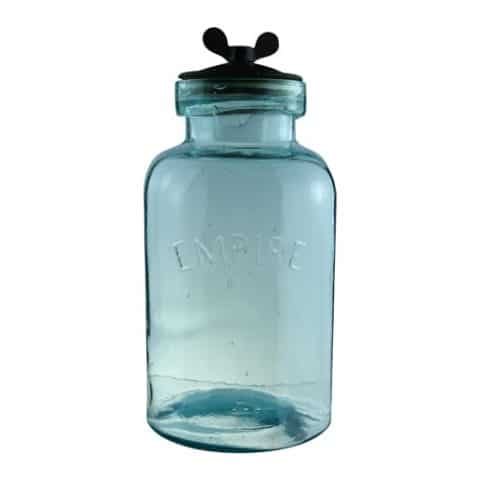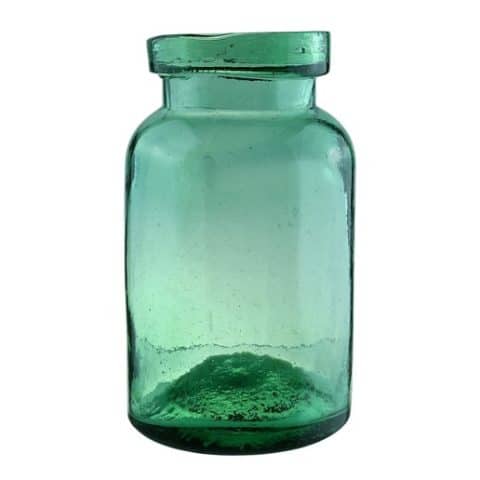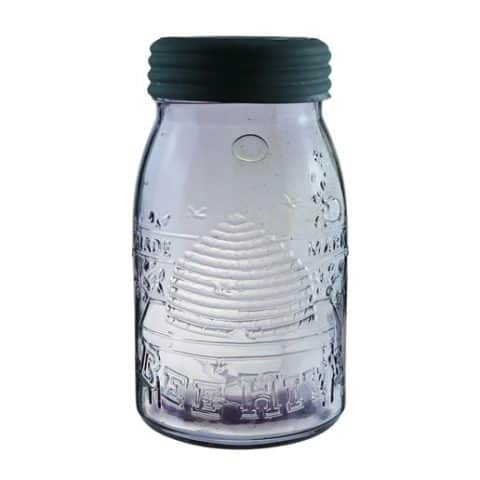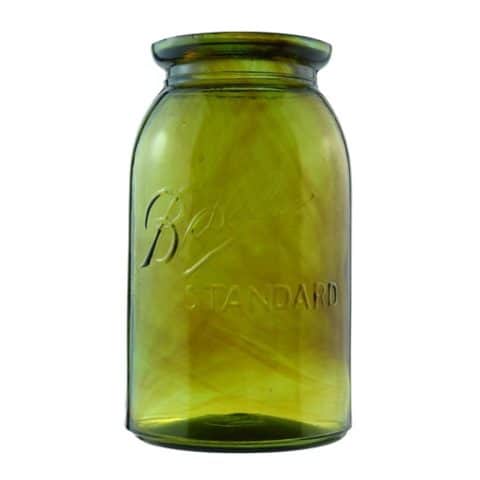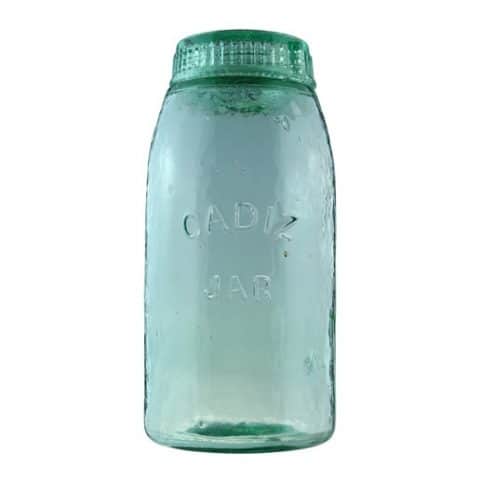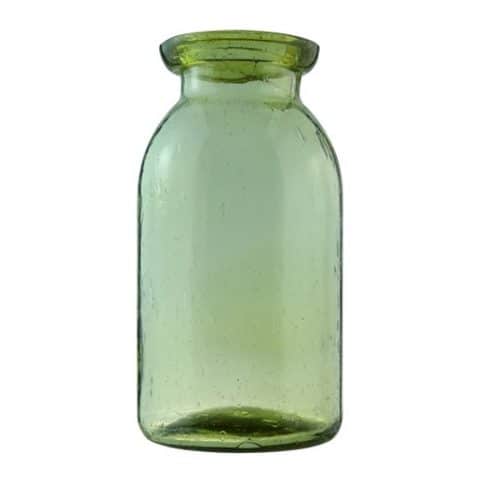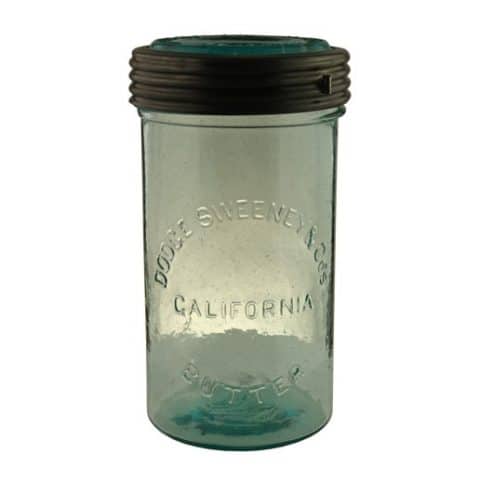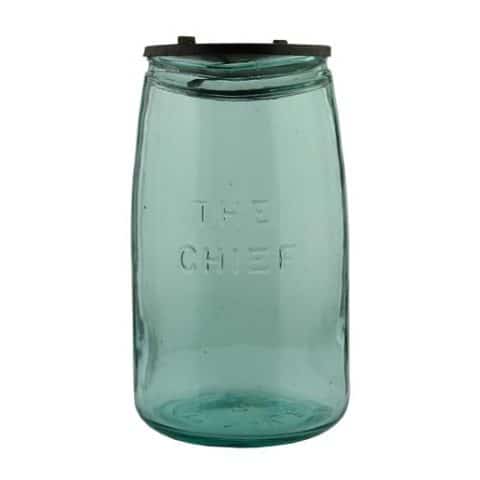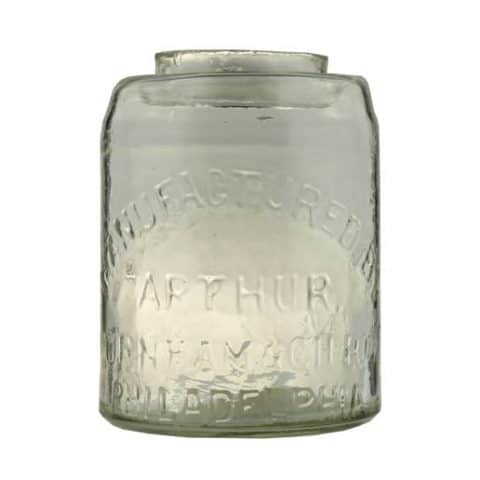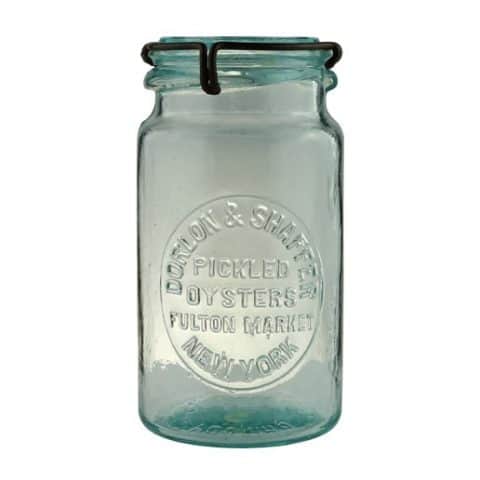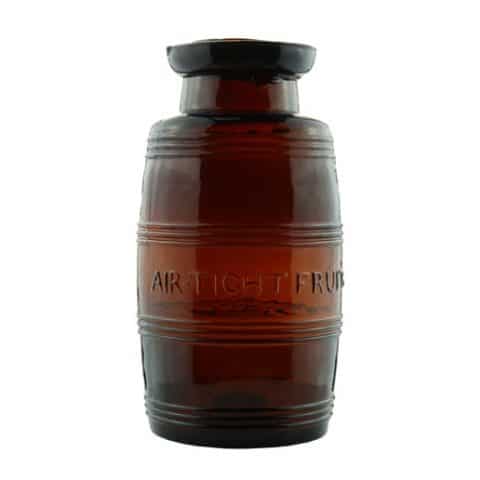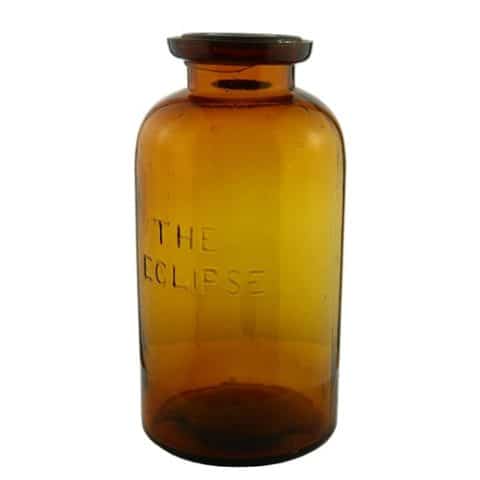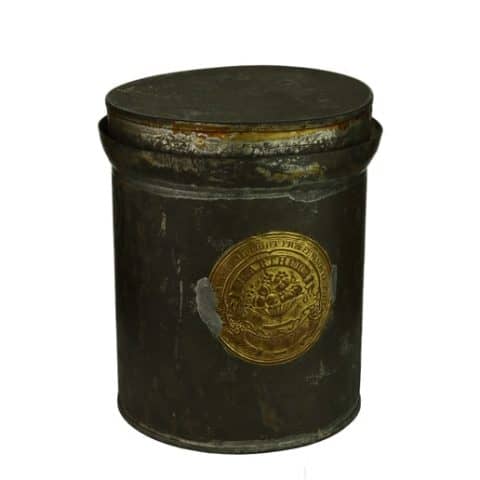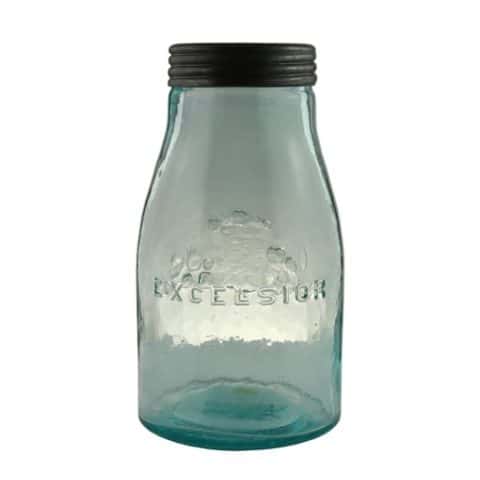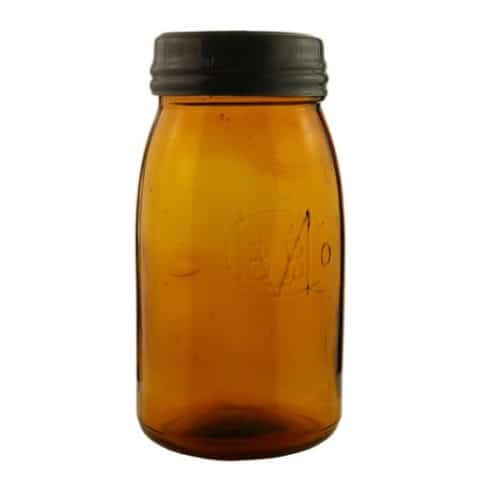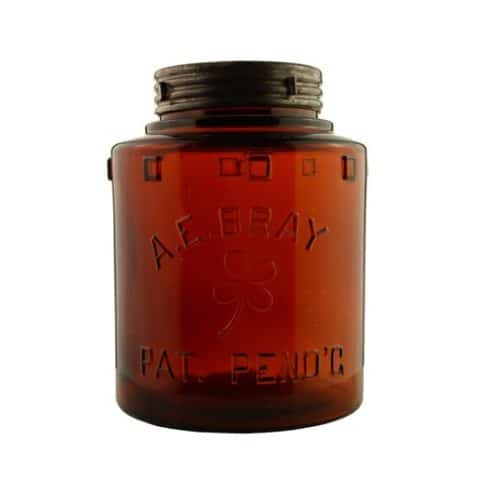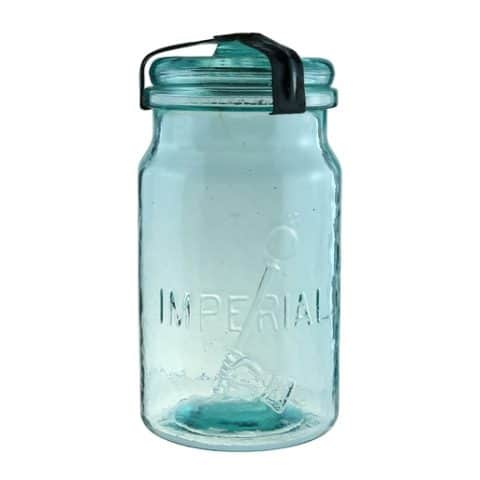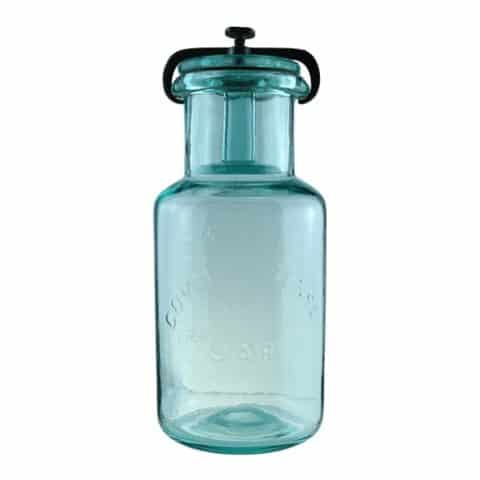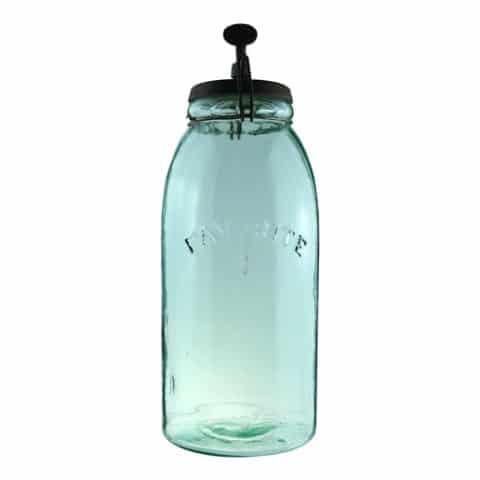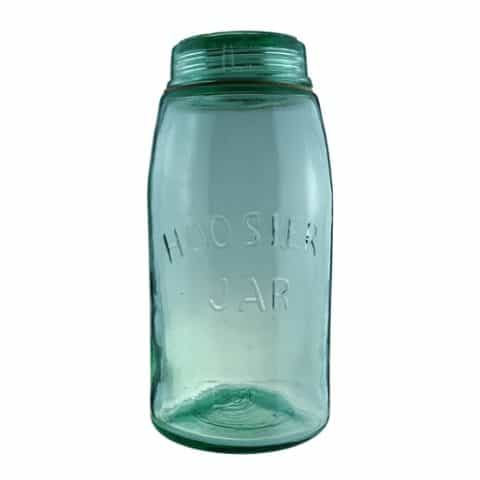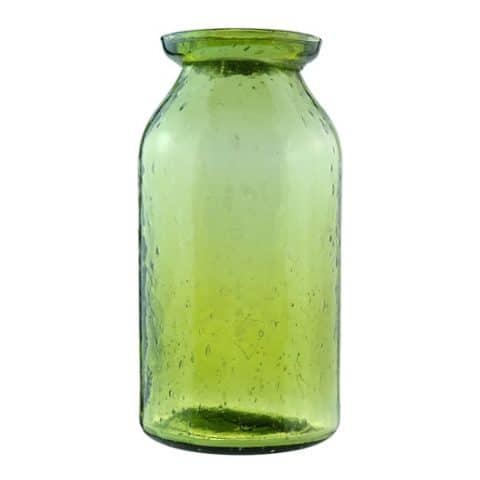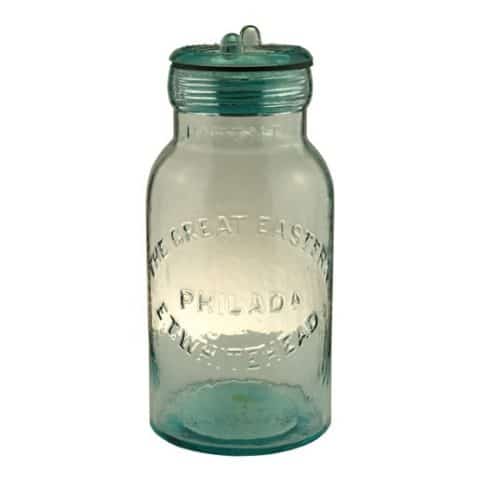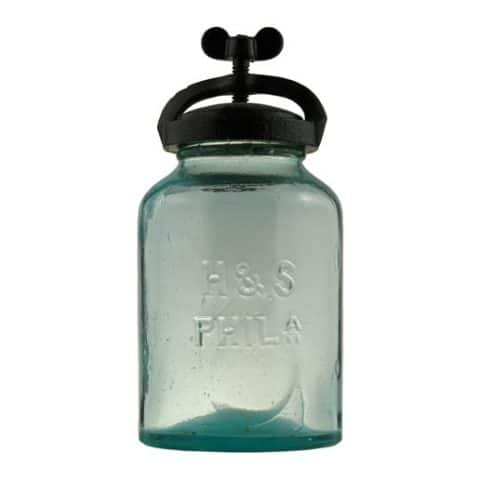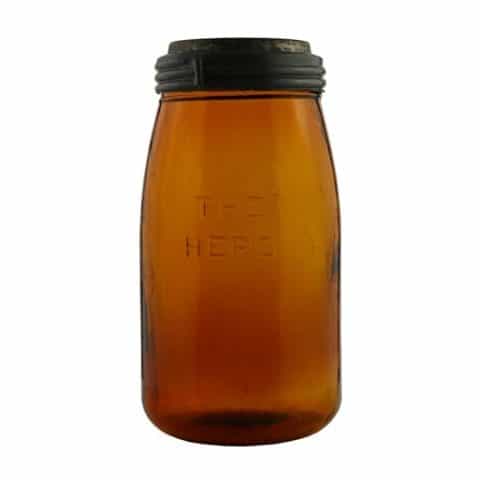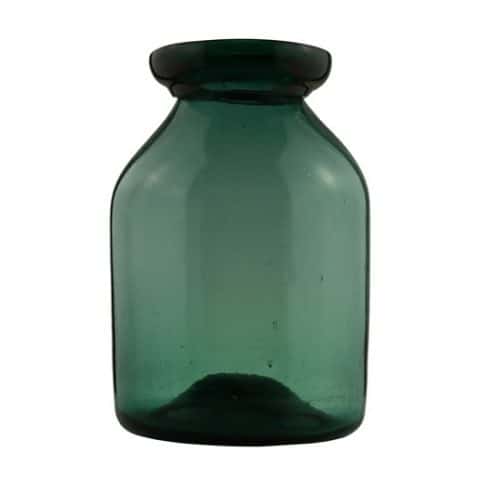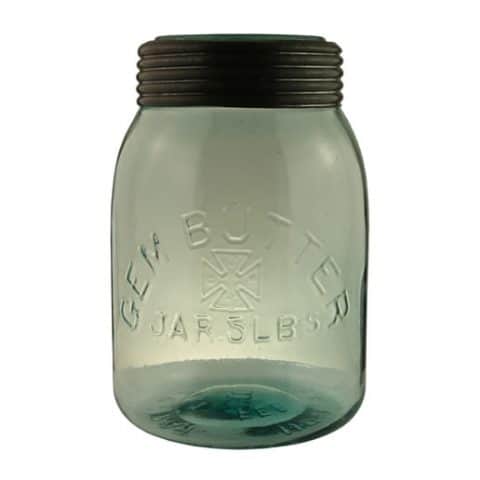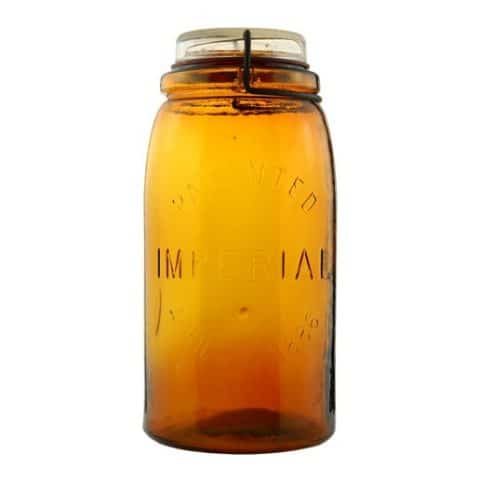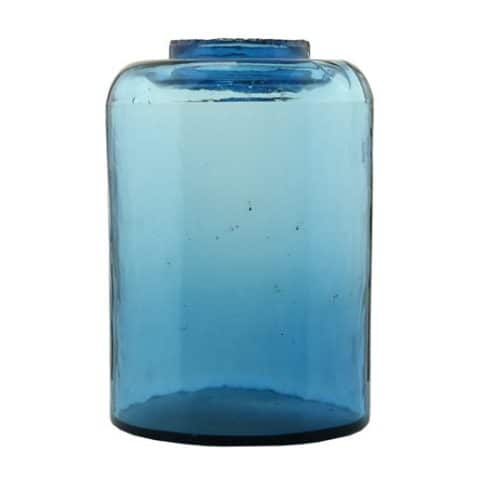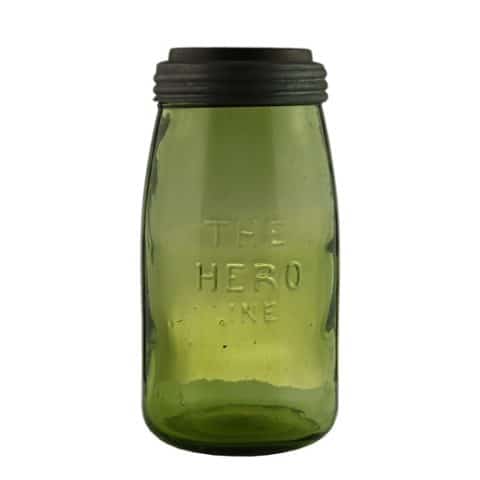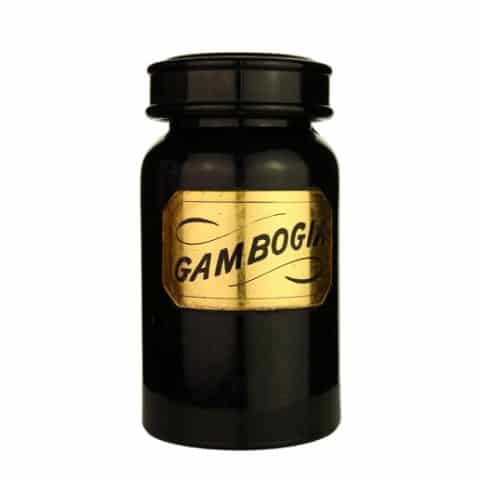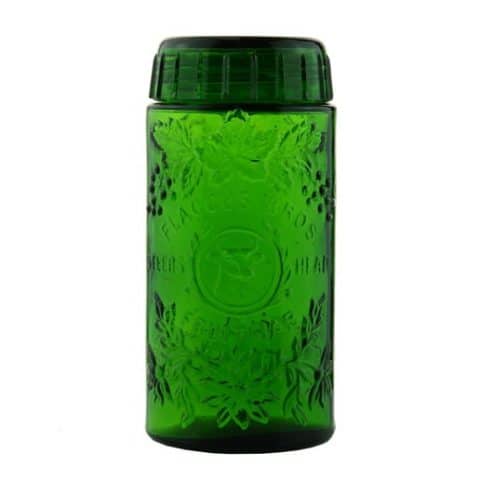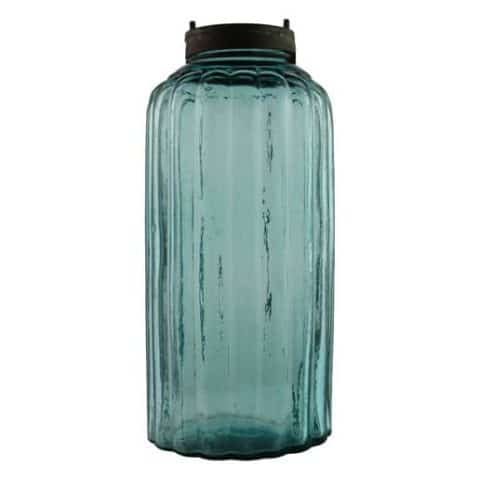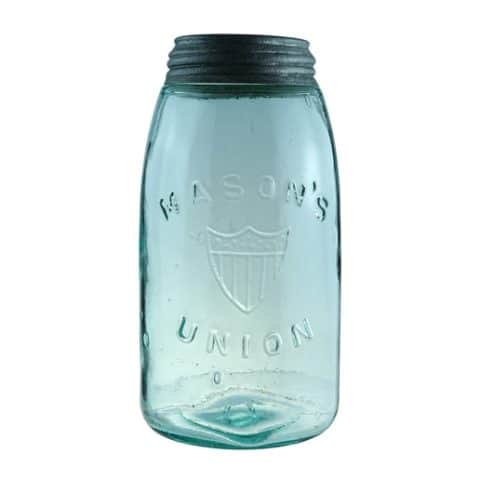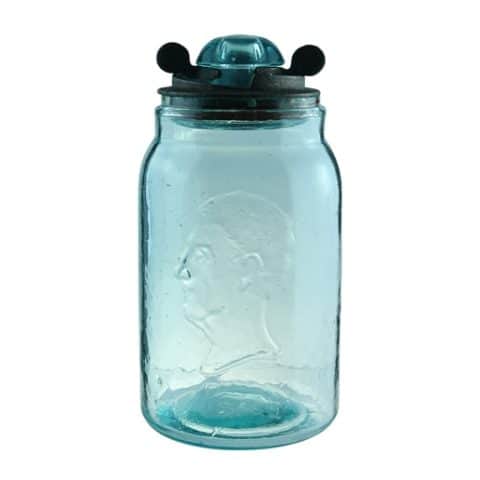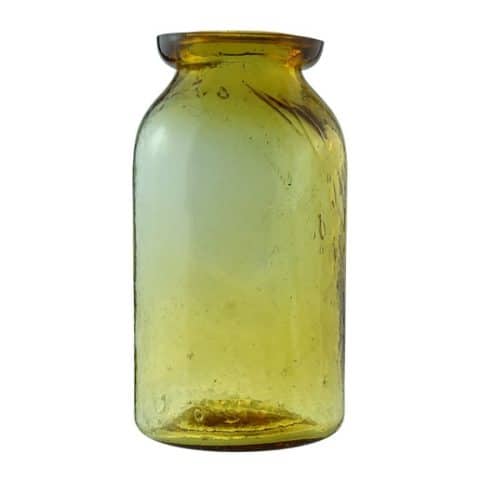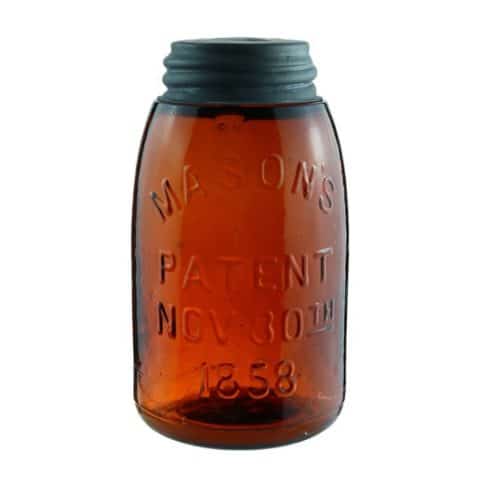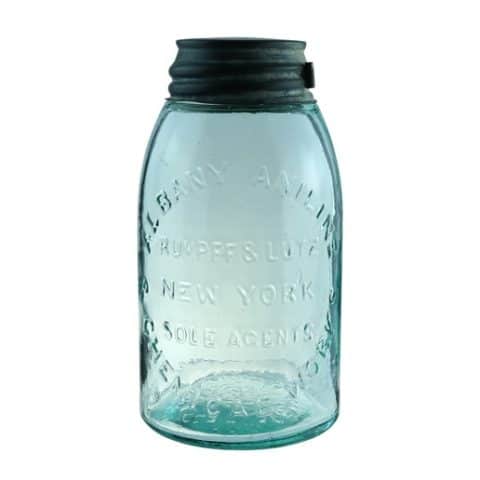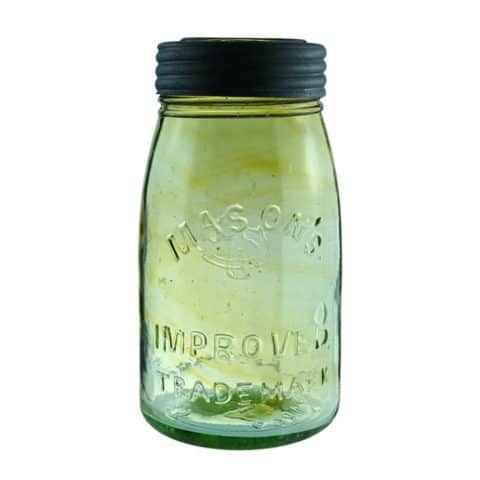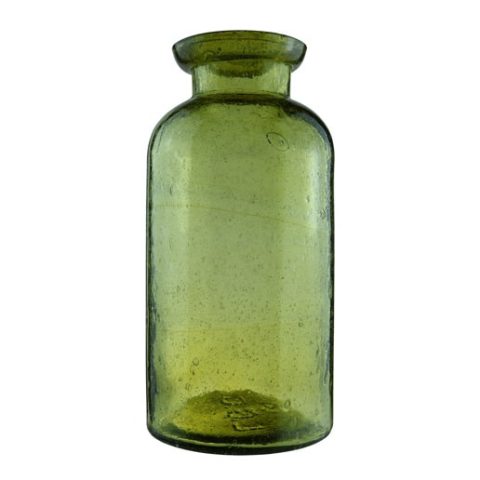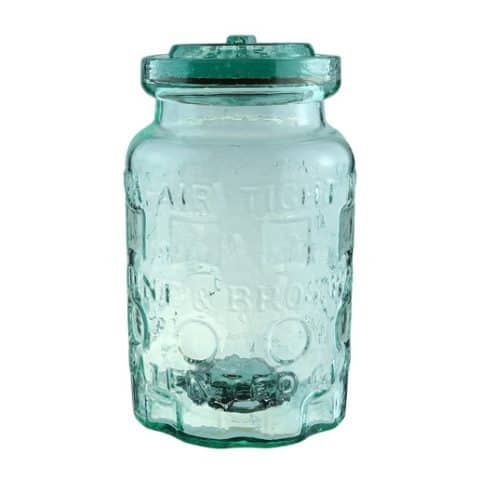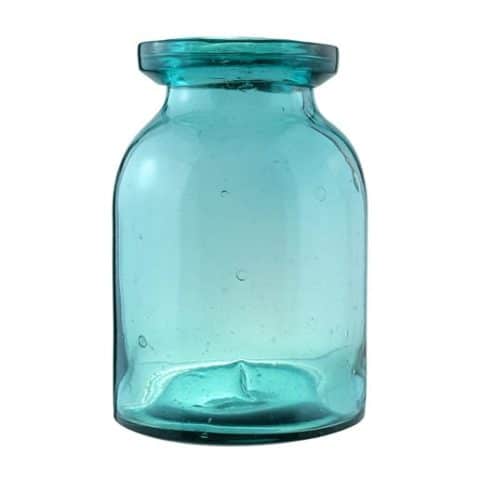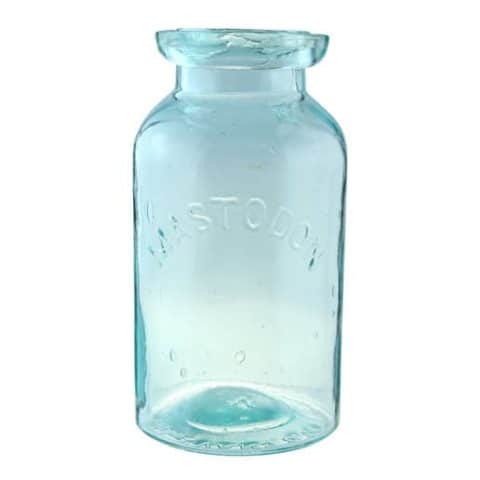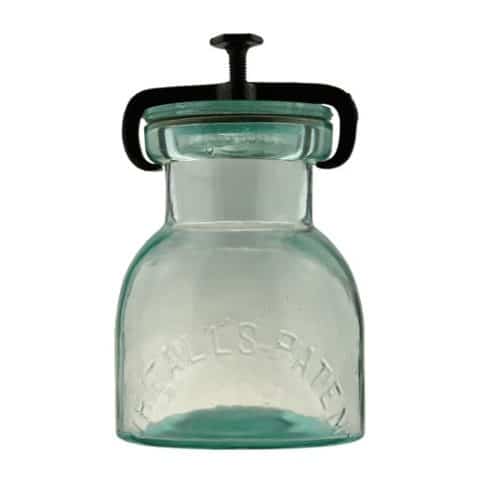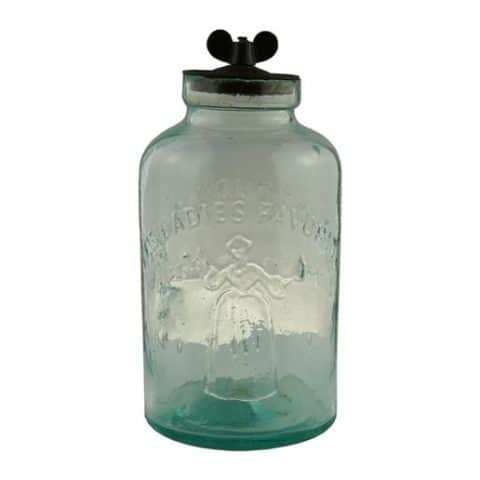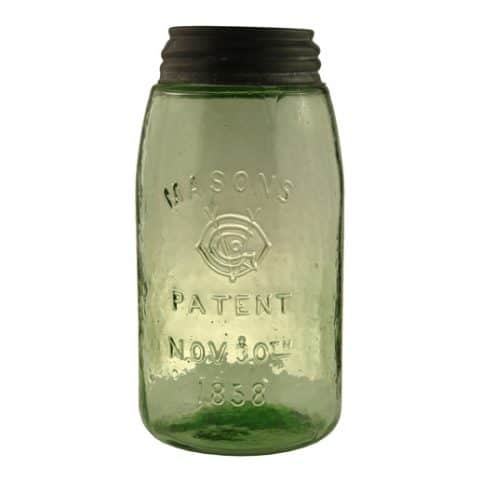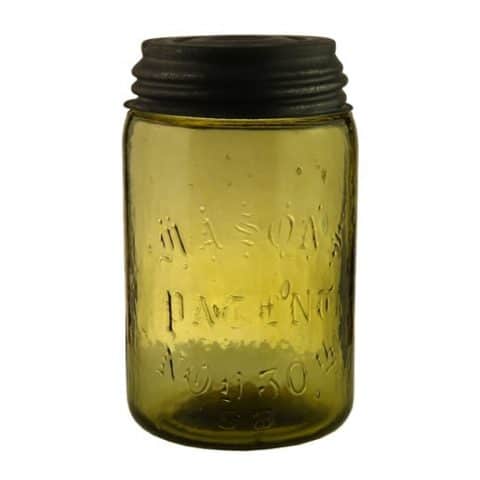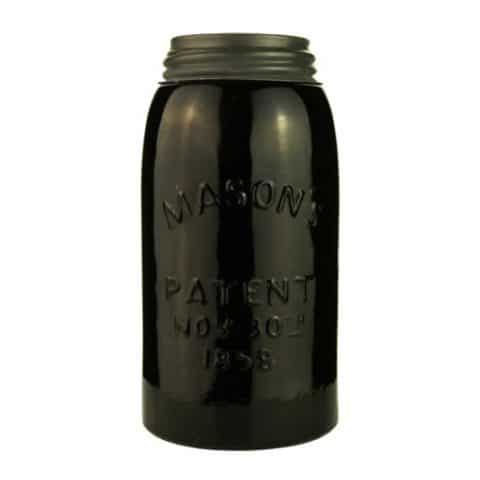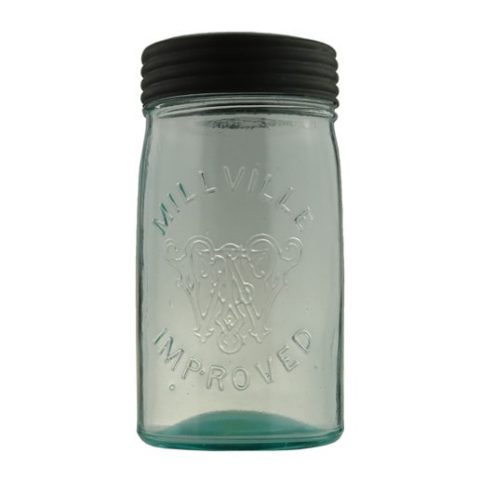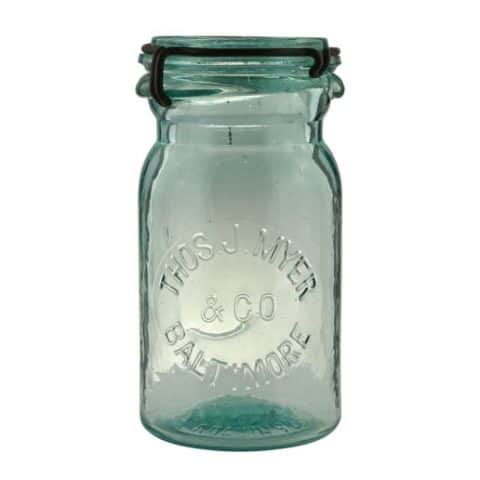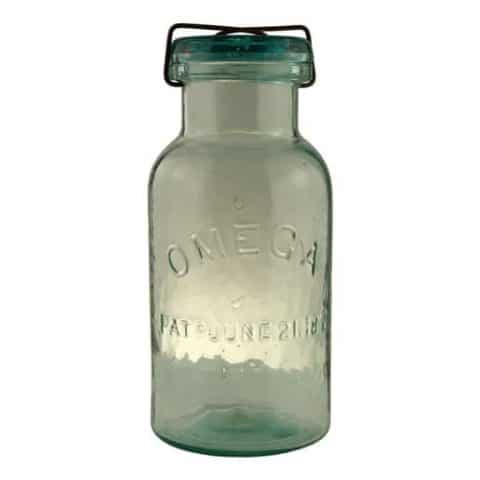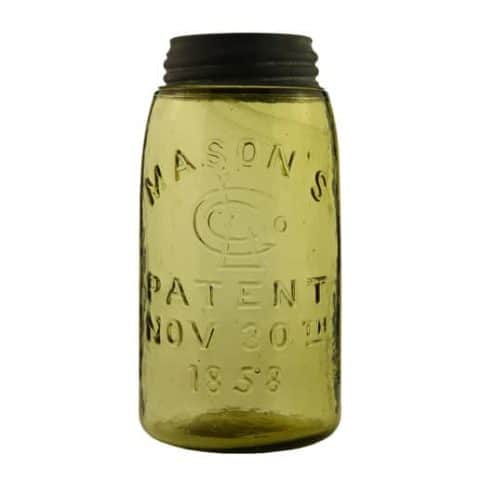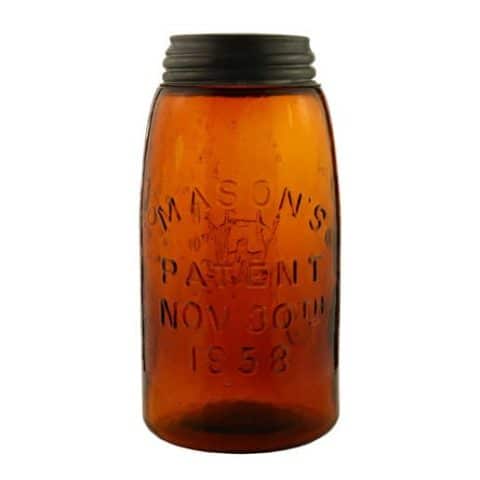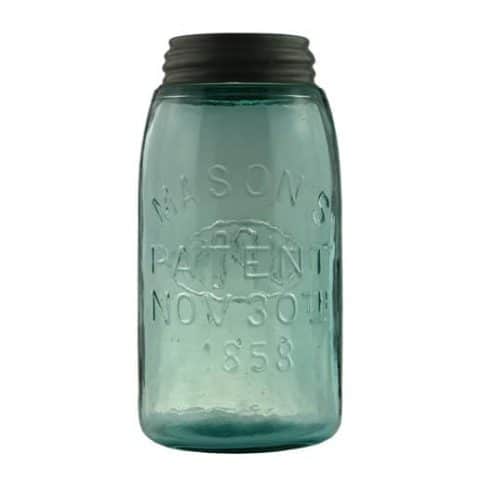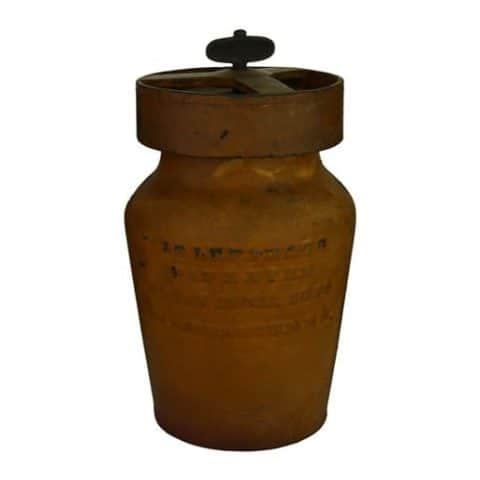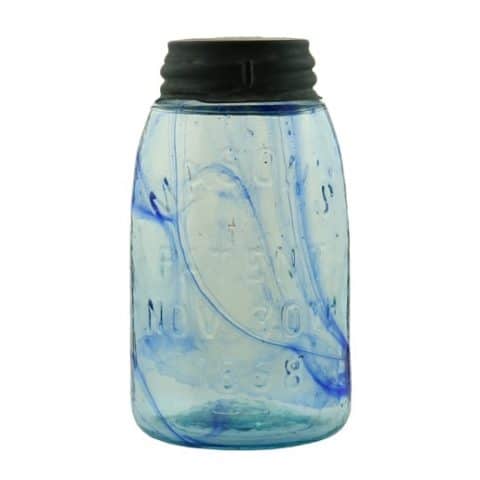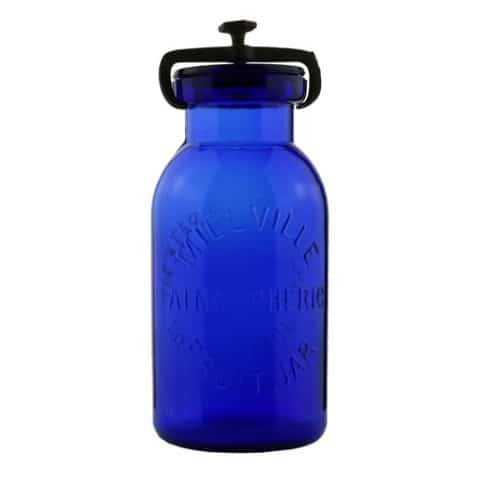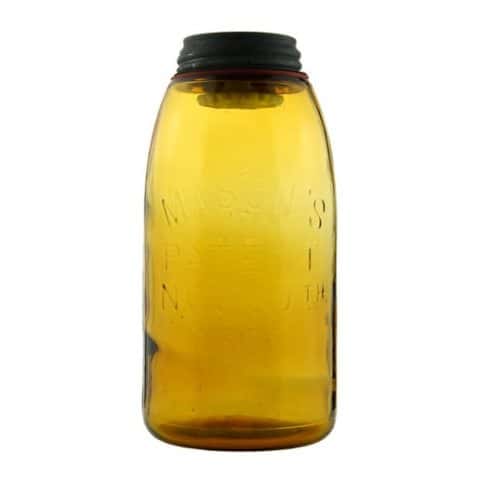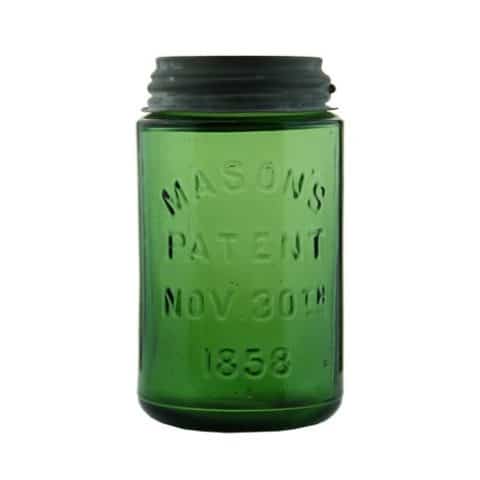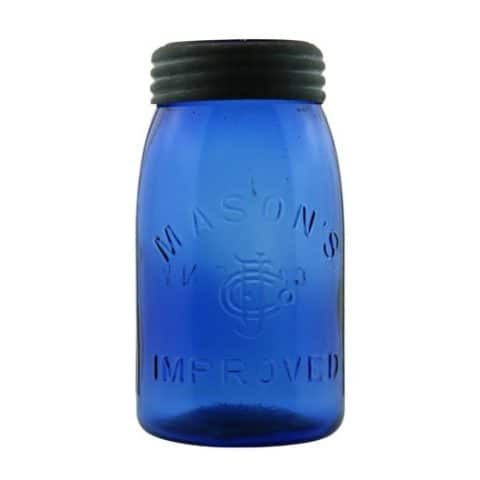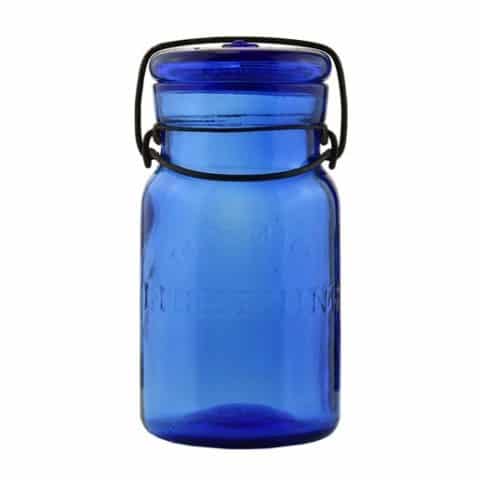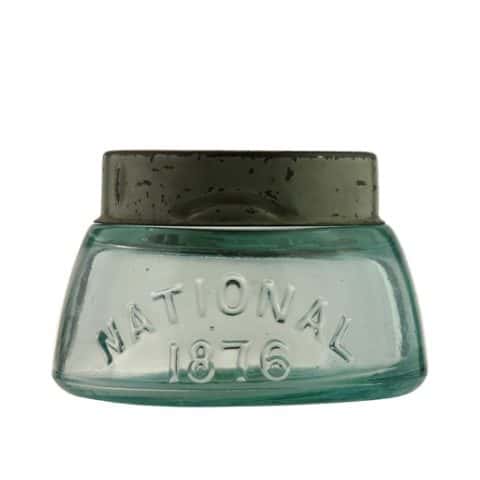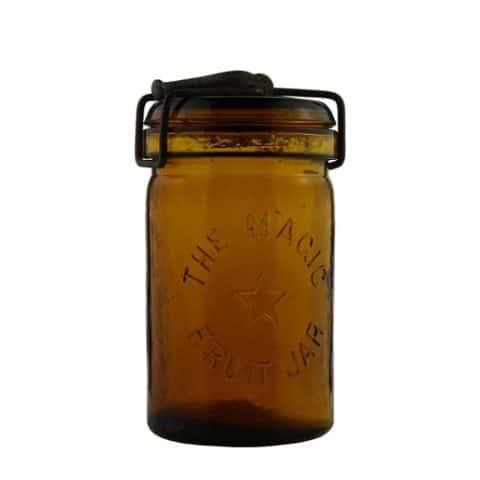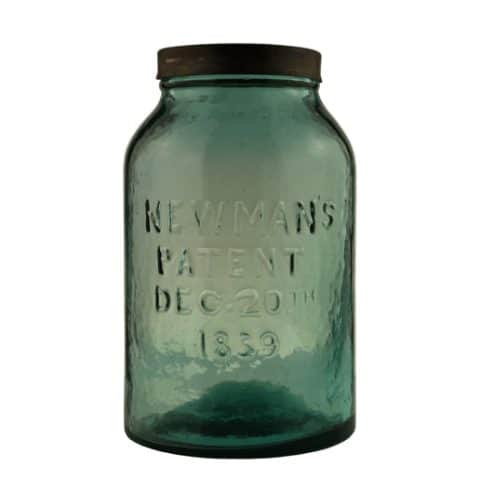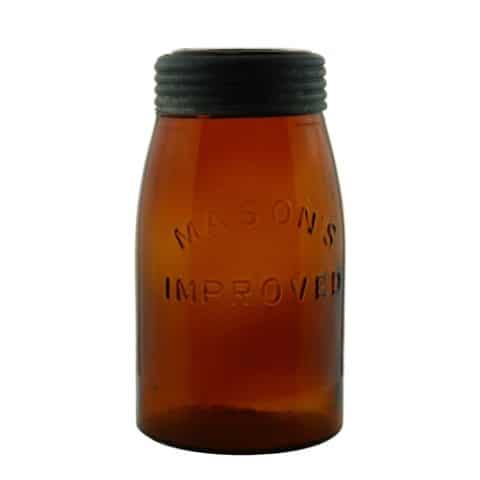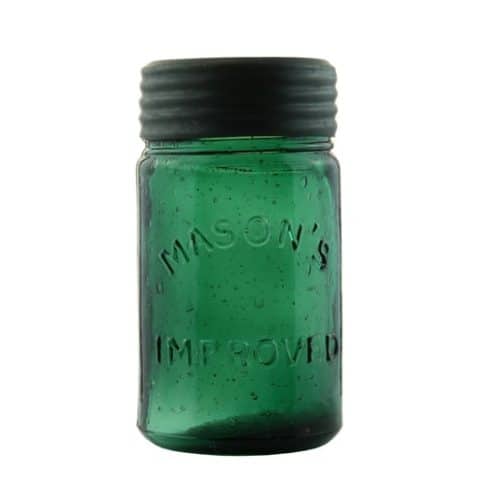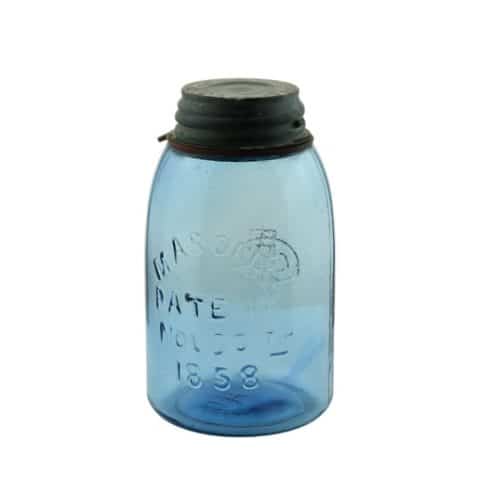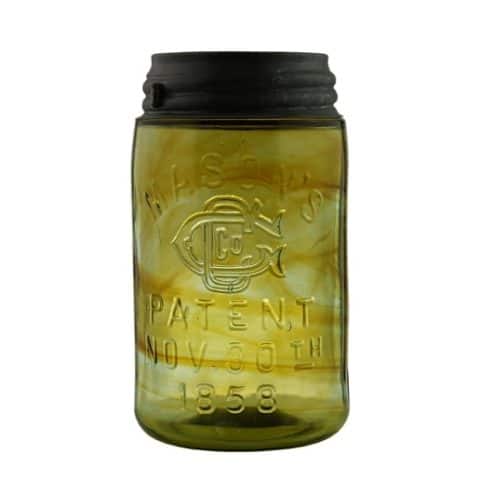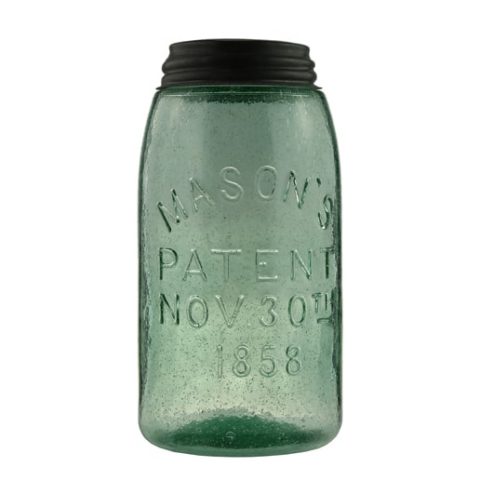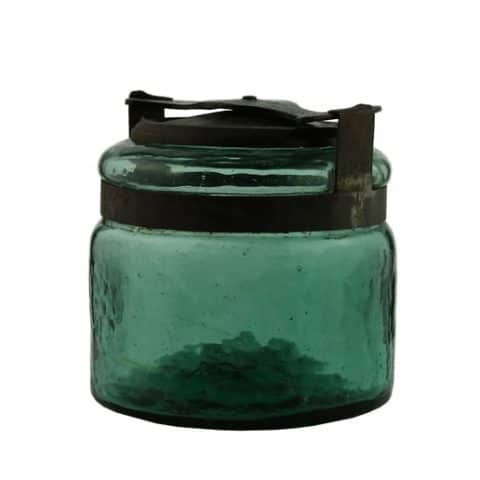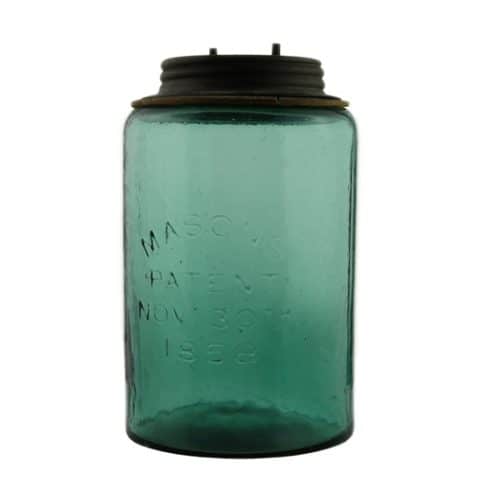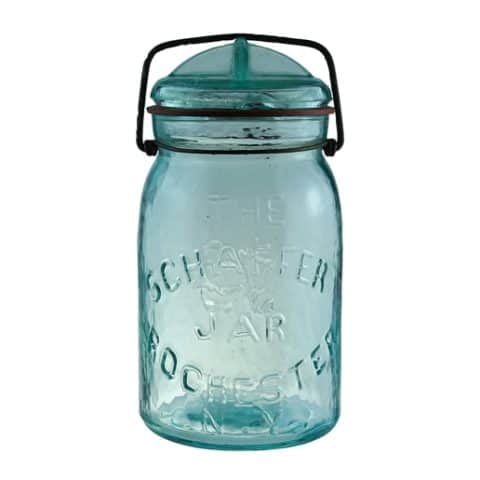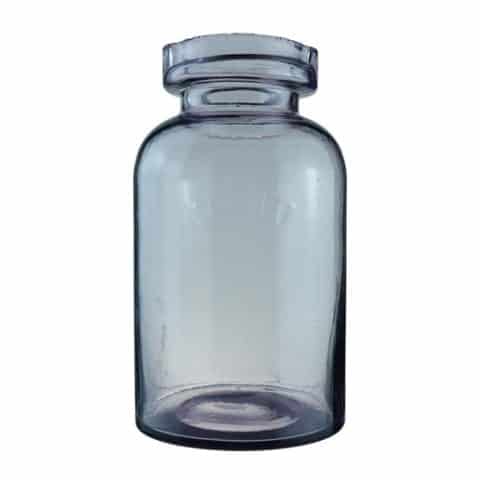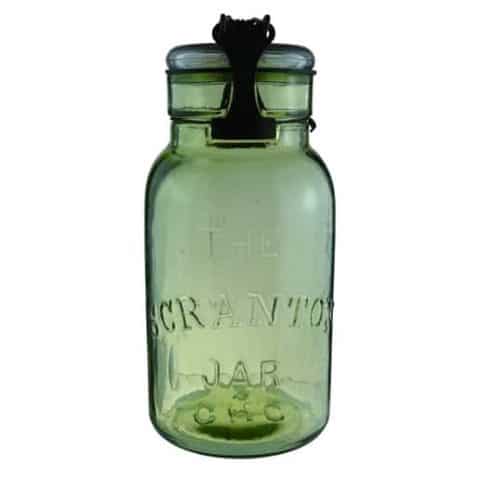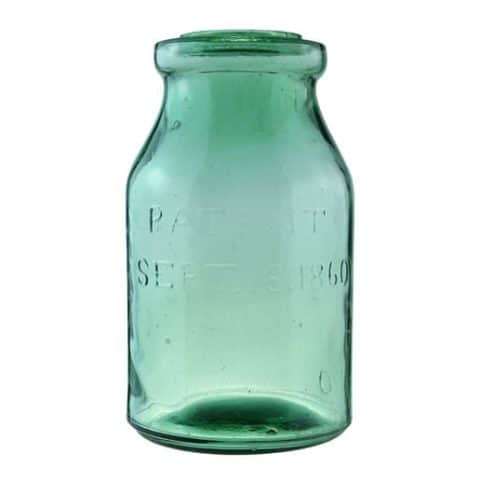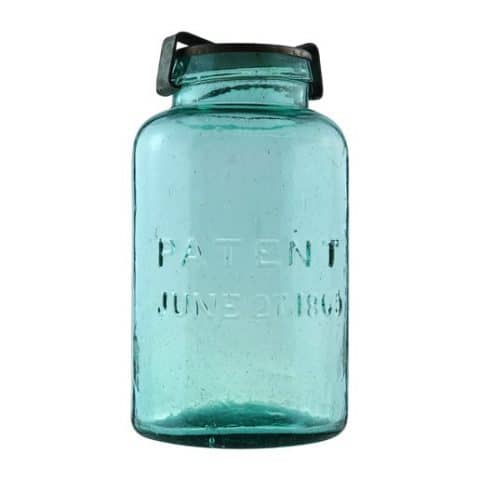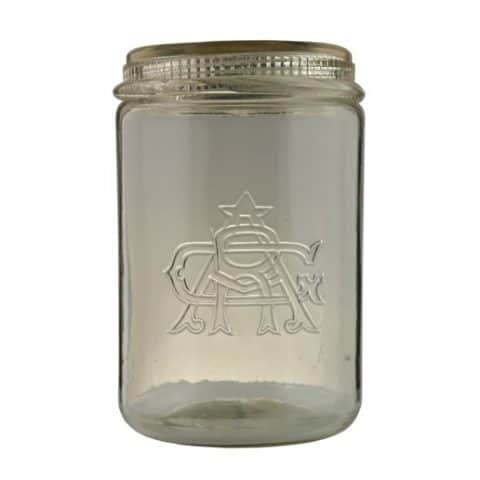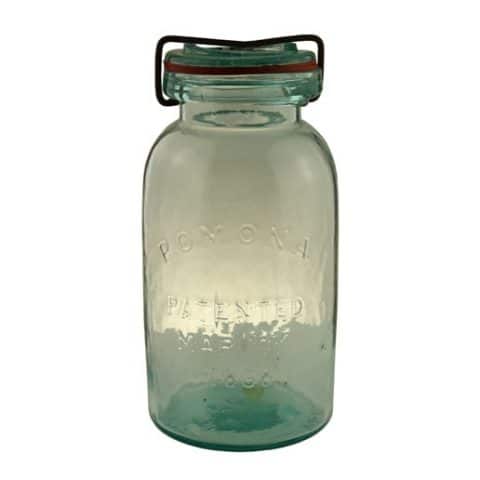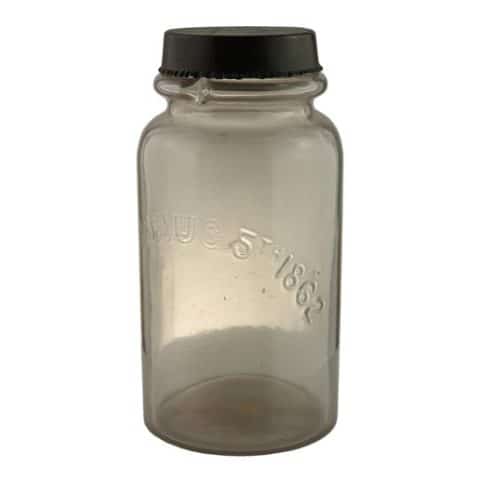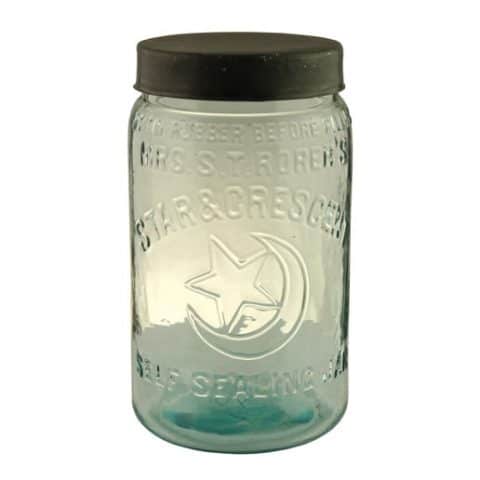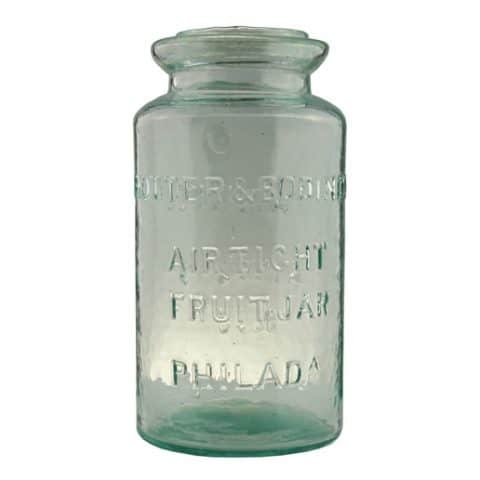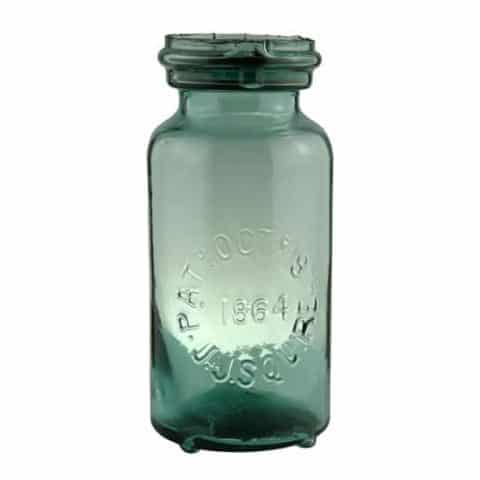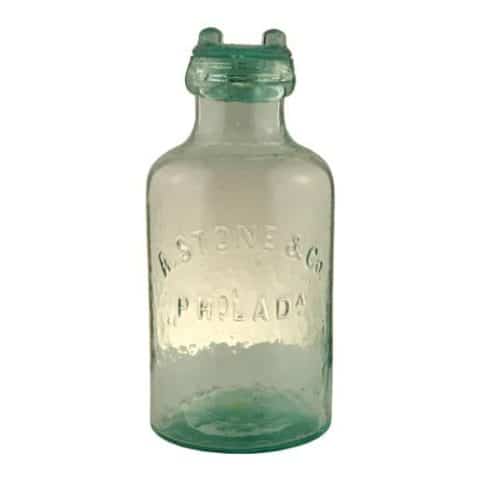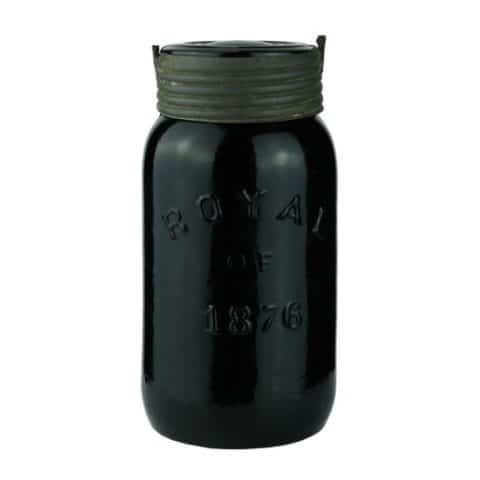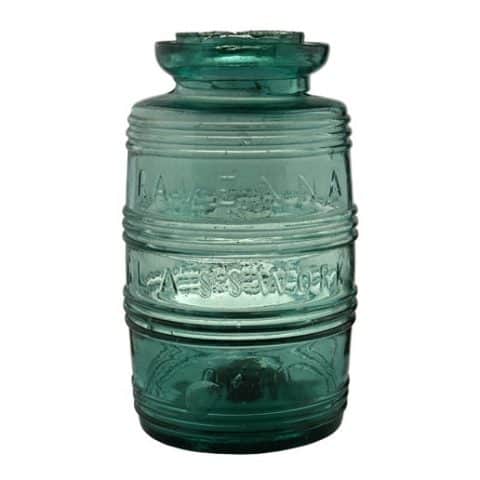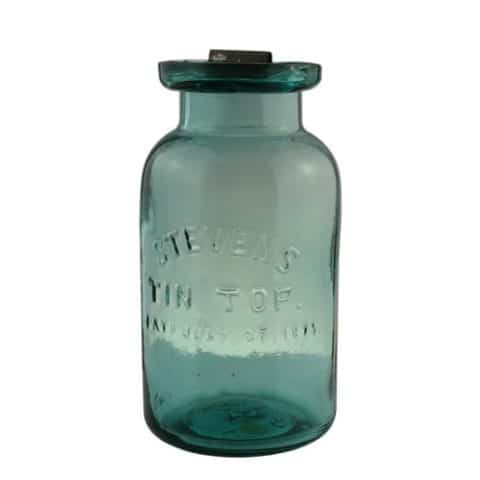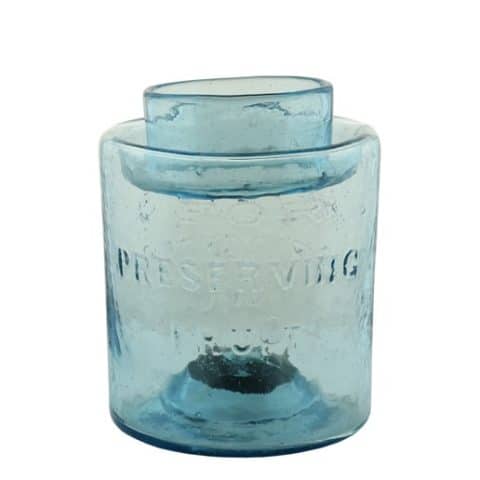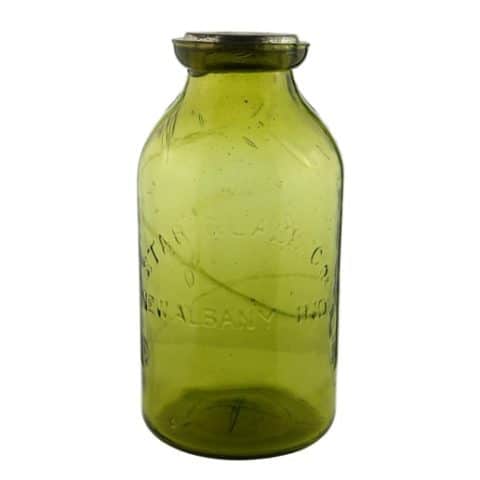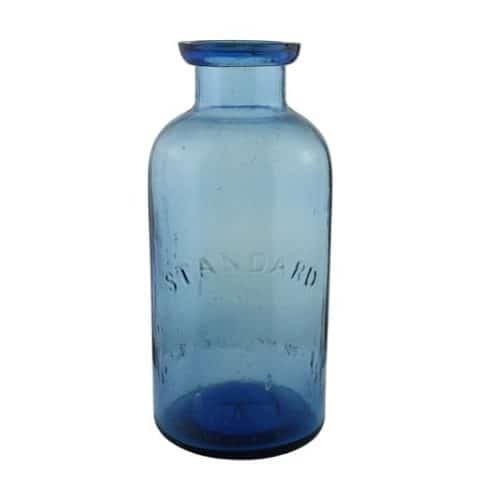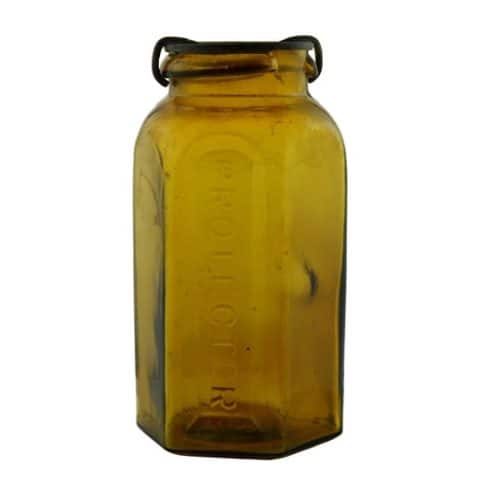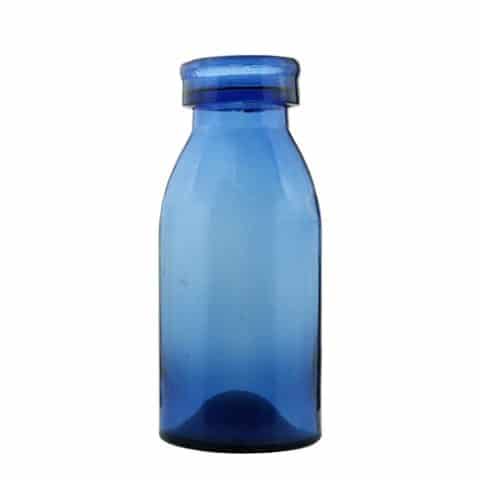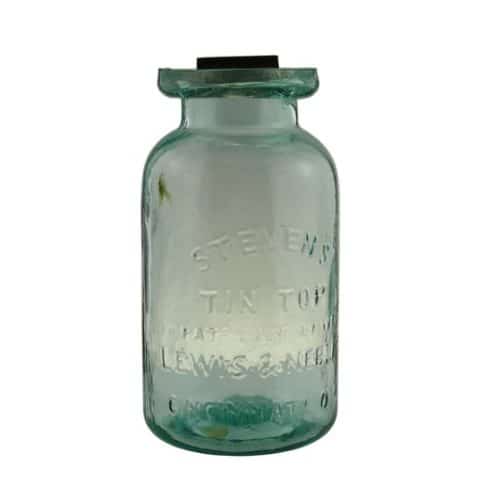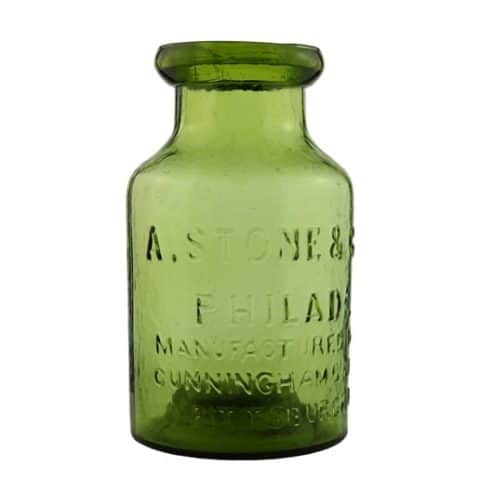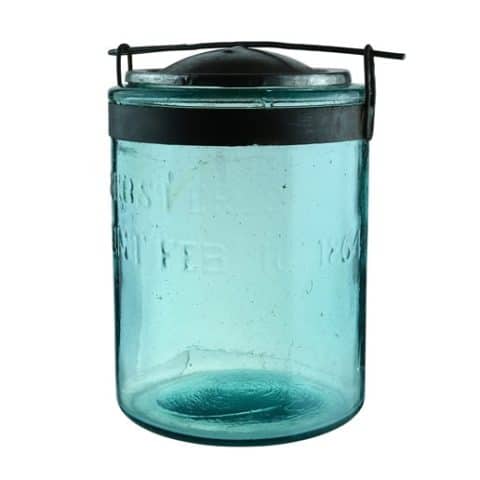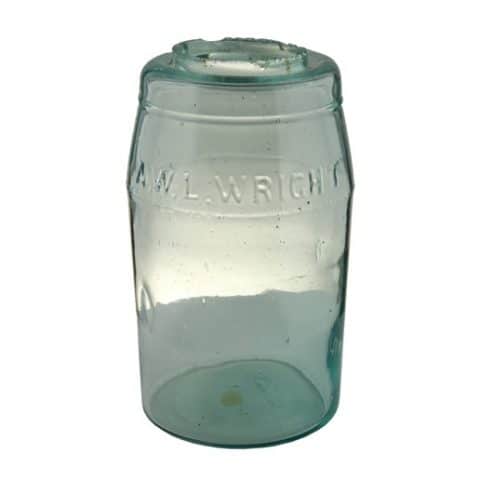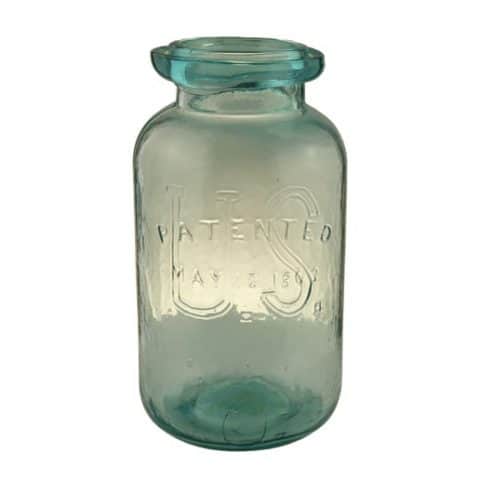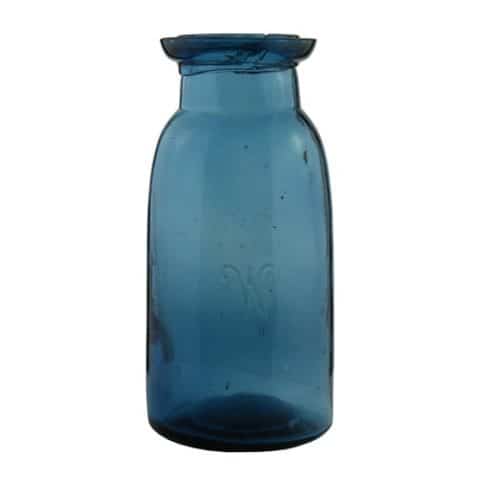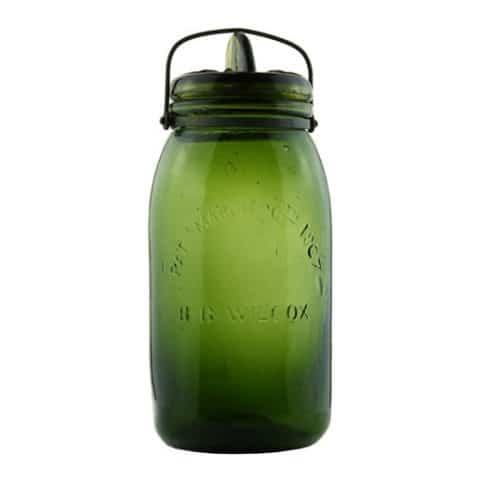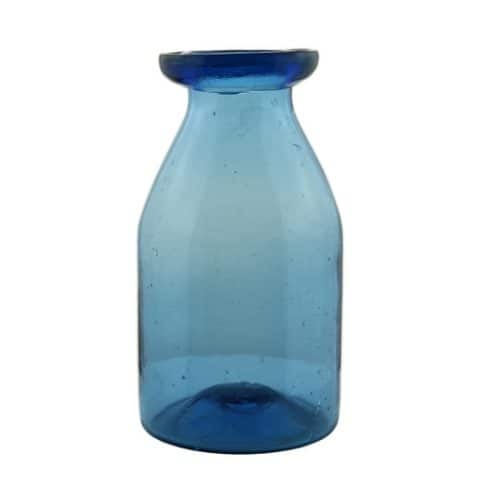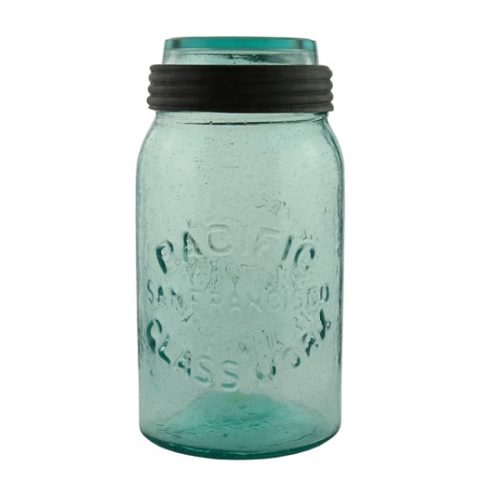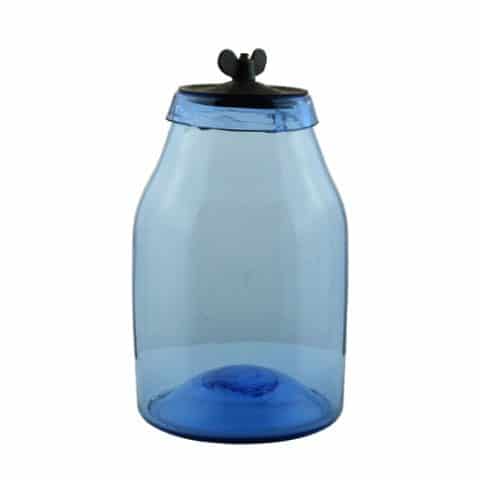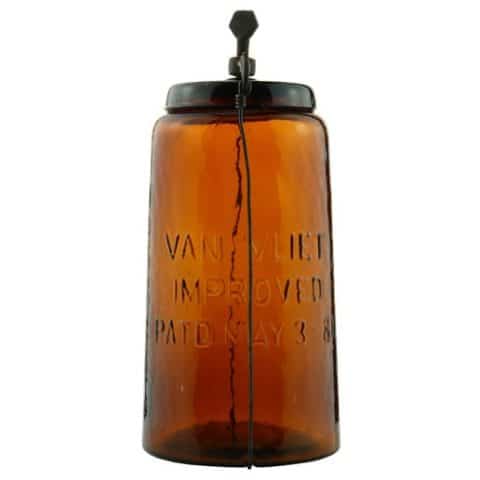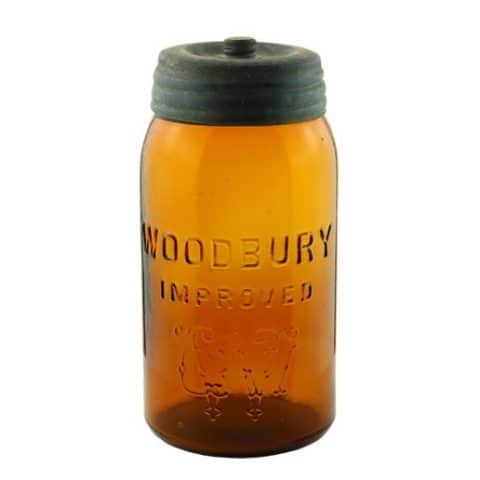Mason’s LGCo (Monogram) Patent Nov 30th 1858
Mason’s
LGCo (Monogram)
Patent Nov 30th 1858
John Landis Mason, New York City, N.Y.
Citron Quart
Provenance: Patricia Sprang Collection
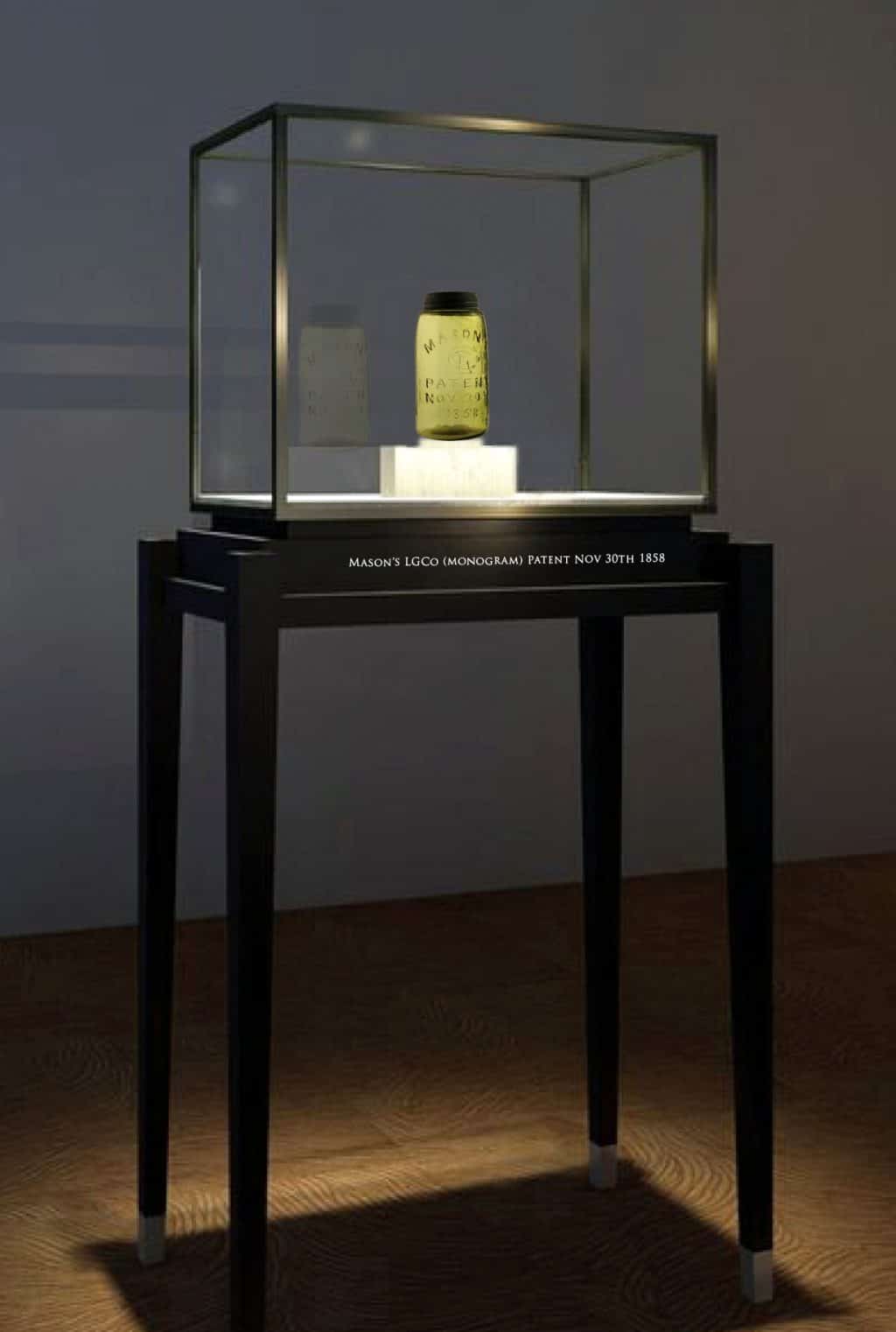
John Landis Mason, in New York City, received a patent for his screw-finished jar on November 30, 1858. When Mason’s patents were due to expire in 1871 and 1872, he sought and obtained a seven-year extension. From that point on, just about everything about his invention and patent is confusing as Mason’s patent extension was transferred to the Consolidated Fruit Jar Company (CFJCo). This extension only covered patent protection until the end of the 1870s. The Consolidated Fruit Jar Co. registered a trademark for Mason jars on October 28, 1879, attempting to continue to control the manufacture and distribution of the jars. In this gray area, numerous other glasshouses made Mason jars with the 1858 embossed patent date during the 1880s and 1890s. It is likely that CFJCo lost control of the market.
See the museum example of a Mason’s Patent Nov 30th 1858 CFJCo jar.
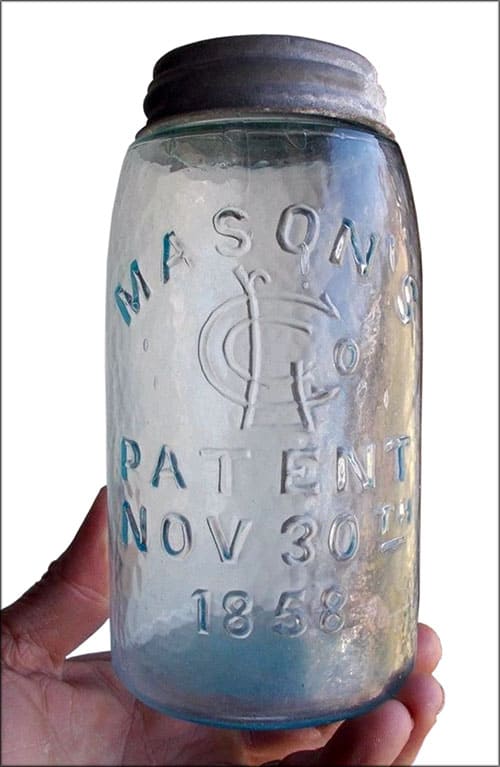
The Mason’s LGCO Patent Nov 30th 1858 jar is hand blown with a ground lip. The closure is a shoulder seal with a zinc screw cap with a milk glass liner. The quarts come in various shades of green and blue aqua glass along with citron. Our museum example is unusually rich and deep in glass color. The midget pints can be found in aqua. In many cases, the glass has character or whittle.
The maker of the Mason’s LGCo Patent Nov. 30th 1858 jar is unknown. Many glass houses embossed a fancy monogram on the molds they were using to blow their own jars. Some jar authorities, in the past, thought the monogram might stand for Lamont Glass Co. the Louisville Glass Co., or the Lindell Glass Co. in St. Louis. Some are not even sure of the exact order of the letters in the monogram.
Support Image: Auction Lot 13927: MASON’S LGCo PATENT 1858 Quart, Citron Yellow, Crude Sharp, Closure: Zinc cap. Appearance: Hammered whittle effect and shiny glass with a trace of content haze. Condition: No damage including a good ground lip with very little flaking. Embossing: Very strong. Base: “13” Age: Late 1800s. Availability: Very scarce and a beautiful early Mason – Greg Spurgeon, North American Glass
Support Image: Auction Lot 3739: MASONS LGCo PATENT 1858 Size: Quart Color: Light Apple Green. Closure: Zinc cap. Appearance: Shiny glass. Condition: No damage including a nice ground mouth with very little flaking. Embossing: Strong. Base: “X 8” Age: Late 1800s. Availability: Scarce in this color – Greg Spurgeon, North American Glass
Support Image: Auction Lot 7029: MASON’S LGCo PATENT 1858, Quart, Sky Blue Closure: Lugged zinc cap. Appearance: Sparkling and whittly glass. Condition: Normal nicking of the ground mouth. Embossing: Strong. Base: “13” Age: Late 1800s. Availability: Scarce and a sharp example. – Greg Spurgeon, North American Glass
Support Image: Auction Lot 4809: MASON’S LGCo PATENT 1858, Quart, Yellow Green. Closure: Zinc cap. Appearance: Whittled and sparkling glass. Condition: Normal nicking of the ground mouth. Embossing: Medium to strong. Base: “2” Age: Late 1800s. Availability: Scarce mold and a highly-appealing color. – Greg Spurgeon, North American Glass
Support Image: Auction Lot 13921: Midget Pint MASON’S LGCo PATENT 1858, Whittled Crude. Color: Aquamarine. Closure: Early midget cap. Appearance: Heavily whittled glass and sparkling clean. Condition: Normal nicking of the ground mouth. Embossing: Very strong. Base: “3” Age: Late 1800s Availability: Scarce midget and an exceptional example – Greg Spurgeon, North American Glass
Support: Reference to Red Book #11, the Collector’s Guide to Old Fruit Jars by Douglas M. Leybourne, Jr.
Support: Reference to Fruit Jar Annual 2020 – The Guide to Collecting Fruit Jars by Jerome J. McCann
Support: Reference to Other “L” Marks by Bill Lockhart, Carol Serr, Beau Schriever, and Bill Lindsey
Join the FOHBC: The Virtual Museum is a project of the Federation of Historical Bottle Collectors (FOHBC). To become a member.

